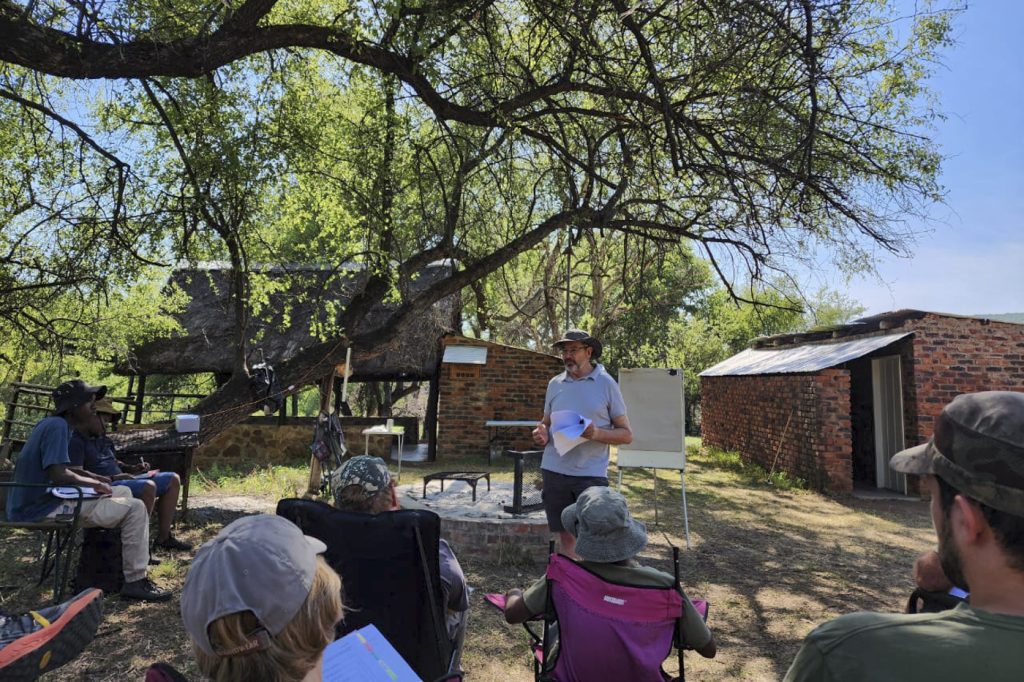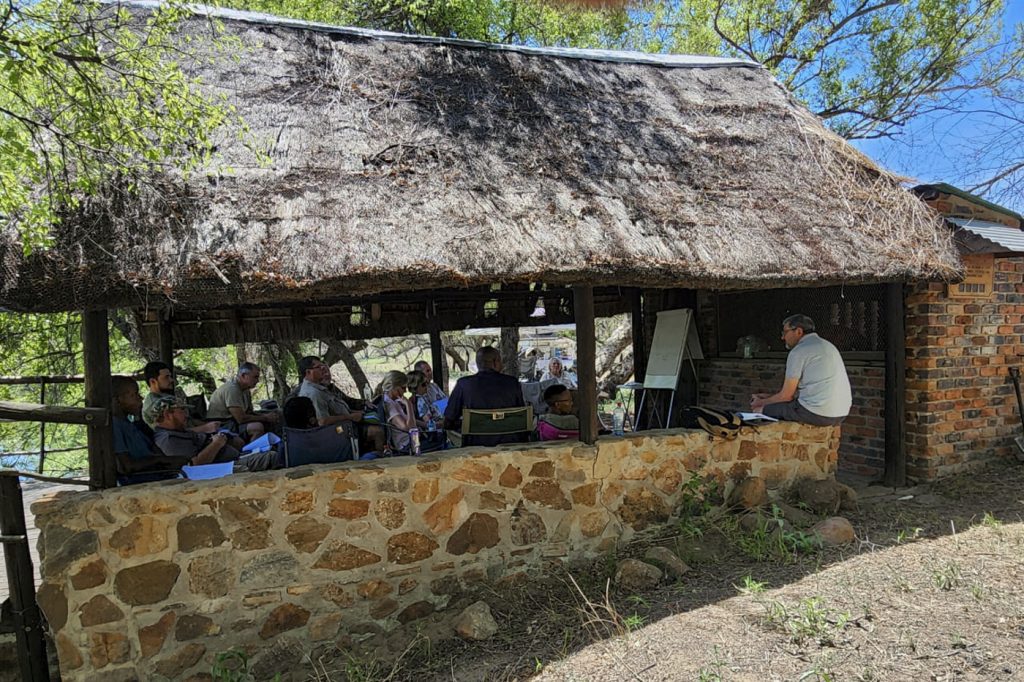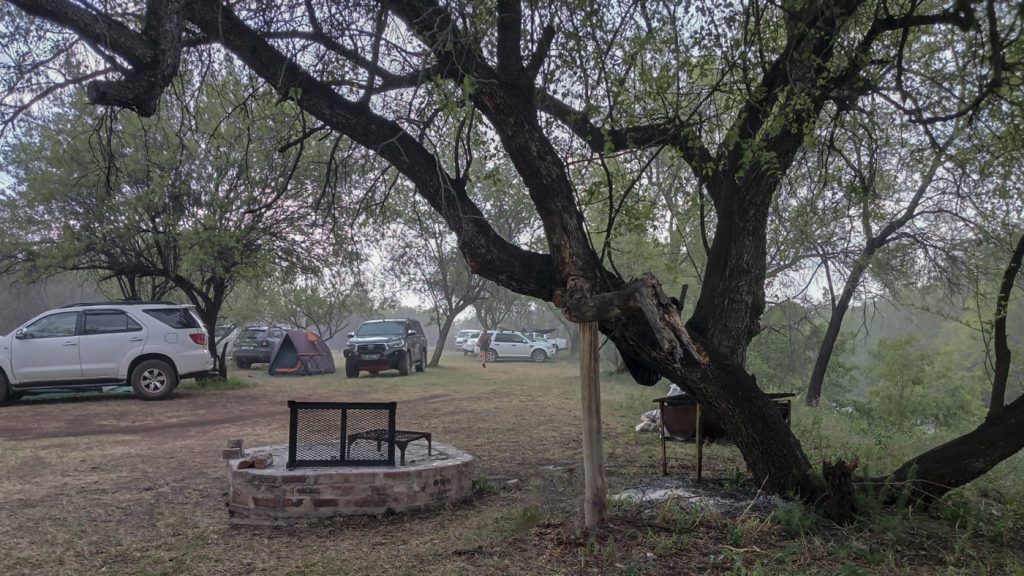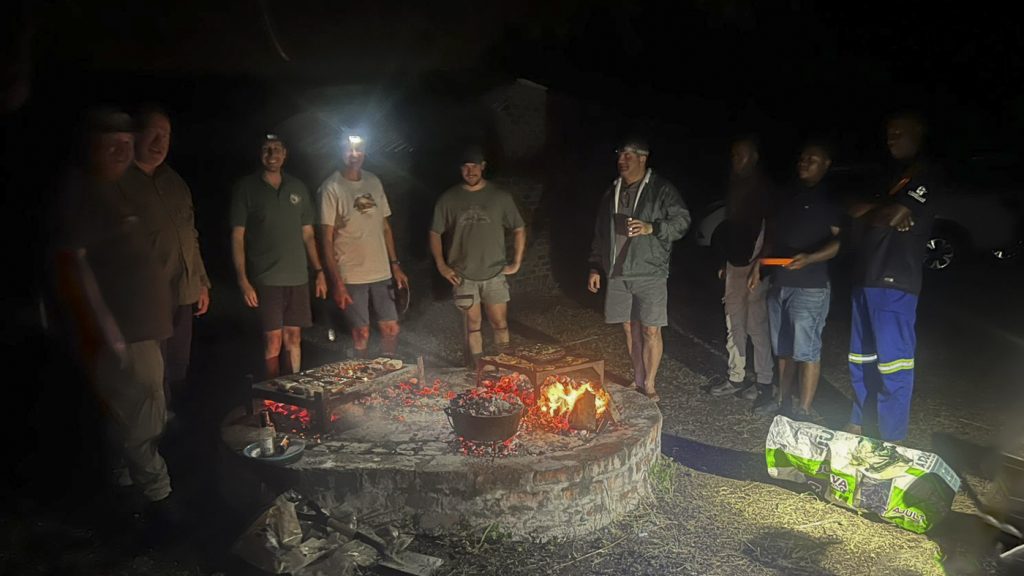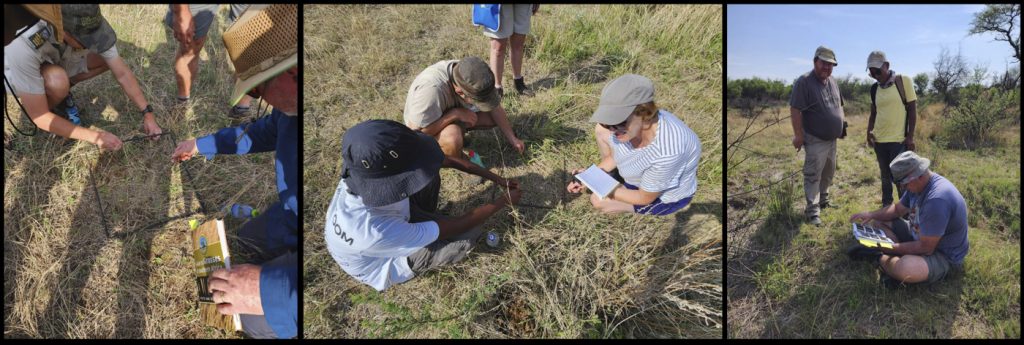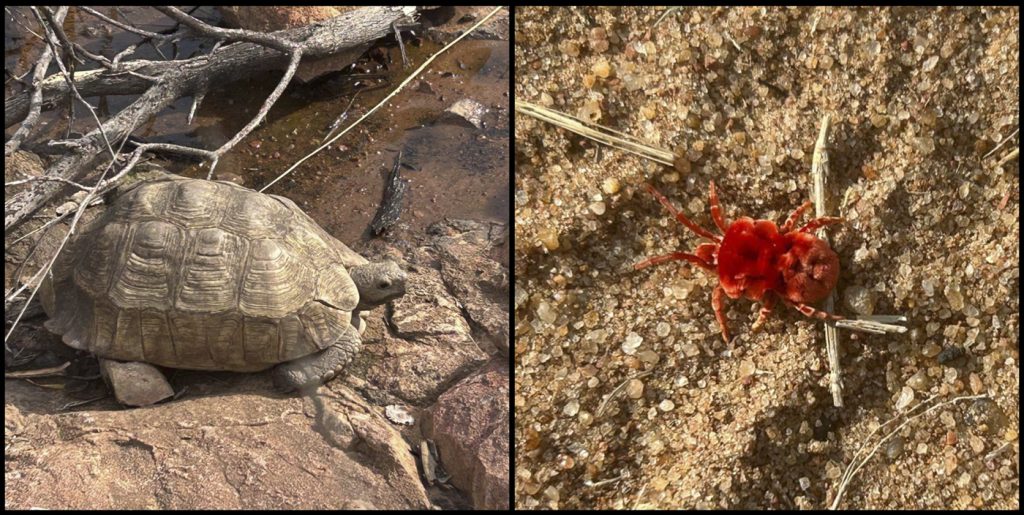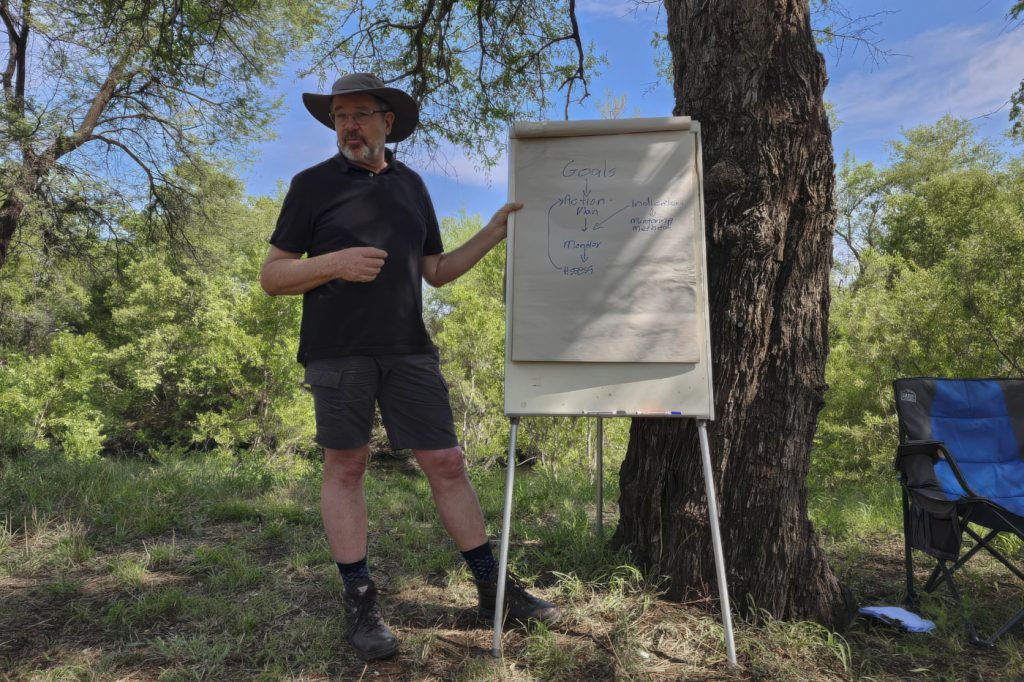Web Report by Clifford Mmutle (Team Rocky Slopes)
The weekend’s activities commenced on Friday afternoon as participants arrived and set up their camping tents.
At 18:45, we convened in the conference room to undertake the scheduled grasses test, which lasted approximately an hour. Following the test, Peter provided feedback on the QCQ and the Amphibians and Reptiles Test, offering insightful reflections and observations on our performance. To conclude the session, Peter introduced Matthew, who presented an outline of the weekend’s focus on veld management. The activities provided an excellent balance of practical engagement and theoretical learning, laying a strong foundation for the weekend ahead.
The veld management session commenced promptly at 08:00, with Britta introducing Dr. Graham von Maltitz, our weekend lecturer. Dr. von Maltitz emphasized an interactive approach to his presentation, engaging students in discussions and activities. He covered essential tools for vegetation management, focusing on fire, stocking rates, and water management.
Due to the intense heat, we moved the session to the Lapa for comfort. The high temperatures led to a decision to take a long three-hour lunch break.
During this time, the weather shifted, and rain began to fall, providing a welcome reprieve from the heat.
Once the rain subsided, we utilized the cooler weather to explore and identify different soil types along the catena zone of duplex soils. We discovered clay soil, which we confirmed by crafting a clay ball, a ring, and a clay ox made by Mollie. The group also identified clay loam, which Jan tested by attempting to create a structure that eventually broke apart. Lastly, we observed sandy soil, further enriching our understanding of soil diversity.
Matthew concluded the lecture for the day and proposed resuming the session on Sunday morning at 07:00, a decision everyone welcomed. In the evening, despite the onset of heavy rain accompanied by lightning, the group persisted with the planned braai. The event was successful, featuring Mollie’s delicious baked bread served with jam and Megan’s campfire popcorn, which everyone enjoyed around the fire.
The day offered a rich blend of learning, fieldwork, and team spirit, making it a memorable part of the weekend program.
Sunday’s session began at 07:00, with Dr. Graham von Maltitz providing a brief overview of veld monitoring techniques. Following this, we divided the group into ecosystem-specific groups to conduct a practical exercise on veld management. Each group used a steel frame, known as a quadrant, which is placed on the ground and the different grass species within the square are counted.
While conducting the practical, we spotted a tortoise and a red velvet mite, discovered by Madie, adding to the day’s excitement and connection with nature.
After completing the fieldwork, we returned to the campsite to wrap up the lecture. Dr. von Maltitz guided us through calculating dry weight mass, which formed the basis for concluding the practical component. He then ended the theoretical segment of the weekend by emphasizing the importance of a structured strategy for veld management: defining goals, creating an action plan, implementing monitoring, and conducting assessments.
To close the session, Britta delivered a heartfelt vote of thanks, expressing gratitude for the shared knowledge and the weekend’s collaborative spirit. The weekend was a well-rounded experience, combining practical learning, engaging lectures, and opportunities to immerse ourselves in the natural environment.
Editor’s Note: Thanks to student Clifford for providing all the news on the Veld Management weekend, can imagine heat must have been intense.
